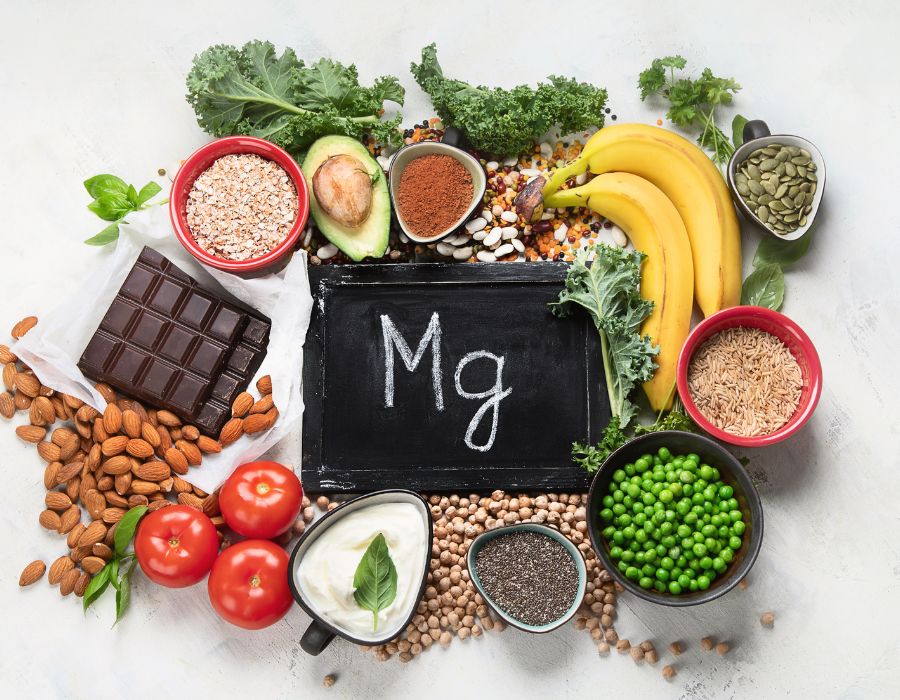Chest discomfort can arise from a variety of causes, ranging from benign gastrointestinal issues to serious cardiovascular emergencies. Distinguishing between gas pain and a heart attack is essential for timely intervention and accurate peace of mind. This guide examines the physiological processes behind these conditions, identifies common risk factors, and provides evidence-based strategies to manage or prevent both issues. It also incorporates insights from medical literature on the symptoms of heart attack vs gas pain, the role of fitness routines such as MMA Cardio, and the significance of dietary measures in maintaining overall health.
Introduction to Gas Pain and Heart Attacks
Gas pain is a common condition that results from the accumulation of excess gas in the gastrointestinal tract. It typically presents as sharp, intermittent discomfort that may be localized in the abdomen or, at times, radiate upward toward the lower chest. In contrast, a heart attack—medically known as a myocardial infarction—is a life-threatening condition caused by a blockage in the coronary arteries. This blockage restricts blood flow to the heart muscle, leading to cell death if not treated promptly.
Understanding the differences between these conditions is crucial. A misinterpretation of symptoms can lead to unnecessary panic or, worse, delayed treatment for a heart attack. Health professionals stress the importance of recognizing subtle variations in the duration, intensity, and nature of the pain to determine whether immediate medical attention is needed.
Key Physiological Differences
Gas Pain
Location and Mechanism:
Gas pain primarily originates in the digestive system. It is caused by air that is either swallowed during eating or produced by the fermentation of undigested food in the intestines. When this gas accumulates, it can lead to bloating, abdominal distension, and sharp, cramp-like pain. In some cases, the discomfort can extend upward, mimicking lower chest pain.
Common Triggers:
- Dietary Choices: High-fiber foods, such as beans, lentils, broccoli, and cabbage, are well-known culprits.
- Carbonated Beverages: These introduce additional air into the digestive system.
- Dairy Products: For individuals with lactose intolerance, dairy can provoke gas and bloating.
- Eating Habits: Rapid eating and talking while eating can lead to swallowing excess air.
- Gut Flora Imbalances: An imbalance in intestinal bacteria may also contribute to excessive gas production.
Heart Attack
Location and Mechanism:
A heart attack is characterized by pain that typically centers in the chest—often on the left side—and may radiate to the arms, neck, jaw, or back. It occurs when a blockage, commonly due to plaque buildup or a blood clot, restricts blood flow through the coronary arteries. Without sufficient oxygen, the heart muscle begins to suffer damage, which can lead to permanent injury or fatal outcomes if not addressed immediately.
Risk Factors:
- Lifestyle Factors: Smoking, sedentary lifestyle, and high-stress levels.
- Diet: High intake of trans fats, sodium, and foods that promote plaque buildup.
- Health Conditions: High LDL cholesterol, hypertension, diabetes, and a family history of heart disease increase the risk significantly.
- Age and Gender: Although heart attacks are more common in older adults, they can occur at any age.
Symptoms and Warning Signs
Gas Pain Symptoms
- Sharp or Cramp-Like Discomfort: Typically felt in the abdomen and sometimes in the lower chest.
- Bloating and Abdominal Distension: A sense of fullness that occurs as gas builds up in the digestive tract.
- Belching or Flatulence: The natural release of gas, which often provides relief.
- Temporary Nature: The pain generally subsides once the gas is expelled or absorbed.
Heart Attack Warning Signs
- Persistent Chest Pain: Often described as pressure, tightness, or squeezing that lasts for several minutes or more.
- Radiating Pain: The discomfort may extend to the left arm, neck, jaw, or back.
- Shortness of Breath: Accompanying the chest pain, even at rest.
- Sweating and Nausea: Cold sweats and feelings of nausea are common.
- Sense of Impending Doom: Many patients report an overwhelming sense of anxiety or fear during a heart attack.
Recognizing these differences is critical. While gas pain is usually short-lived and alleviated by minor interventions, heart attack symptoms are persistent and require immediate medical evaluation.
Comparative Table: Gas Pain vs. Heart Attack

Below is a concise comparison highlighting the primary differences between gas pain and a heart attack:
| Factor | Gas Pain | Heart Attack |
|---|---|---|
| Pain Location | Primarily in the abdomen may radiate to lower chest | Central chest, often left-sided; may radiate to arms, neck, jaw |
| Pain Duration | Short-lived and intermittent | Persistent, lasting several minutes or more |
| Pain Quality | Sharp, cramp-like, often relieved by movement or belching | Pressure, tightness, or squeezing sensation |
| Signs | Bloating, indigestion, belching, flatulence | Shortness of breath, sweating, nausea, dizziness, anxiety |
| Cause | Accumulation of gas due to dietary habits and digestive processes | Blockage in coronary arteries due to plaque buildup or clot formation |
Common Causes and Risk Factors
Causes of Gas Pain
Gas pain is generally linked to dietary and lifestyle factors. Key contributors include:
- High-Fiber Diets: Foods such as beans, lentils, and certain vegetables are nutritious but can lead to gas formation.
- Carbonated Drinks: The carbonation increases the amount of air swallowed, contributing to discomfort.
- Dairy Products: Particularly for those who are lactose intolerant, these can cause significant bloating and gas.
- Eating Habits: Eating too quickly or talking while eating can result in the ingestion of excess air.
- Gut Health: Imbalances in intestinal flora can lead to inefficient digestion and increased gas production.
Risk Factors for Heart Attacks
Several risk factors can predispose an individual to a heart attack, including:
- Diet and Lifestyle: A diet high in saturated fats, sodium, and processed foods can contribute to plaque buildup. Lack of physical activity further exacerbates the risk.
- Medical Conditions: Conditions such as high LDL cholesterol, hypertension, and diabetes play a significant role.
- Genetic Factors: A family history of heart disease increases susceptibility.
- Age and Gender: Although heart attacks are more common in older populations, they are not confined to them.
- Stress: Chronic stress can negatively impact cardiovascular health by raising blood pressure and cholesterol levels.
Diagnostic Approaches
For Gas Pain
Diagnosing gas pain is generally straightforward and relies on a patient’s history and symptom description. The diagnostic process may include:
- Medical History Review: Detailed evaluation of dietary habits, recent meals, and the presence of other gastrointestinal symptoms.
- Physical Examination: Assessing the abdomen for signs of bloating, tenderness, or distension.
- Elimination Diet: In some cases, dietary adjustments may be recommended to identify specific food triggers.
- Imaging: Rarely, imaging studies such as abdominal X-rays are used to rule out other causes of abdominal pain.
For Heart Attacks
Given the urgency of a heart attack, diagnostic measures must be rapid and accurate. Standard tests include:
- Electrocardiogram (ECG): A primary tool used to detect abnormalities in the heart’s electrical activity and to identify signs of myocardial injury.
- Blood Tests: Measurement of cardiac enzymes, such as troponin, which are elevated during heart muscle damage.
- Imaging Tests: Coronary angiography or echocardiography may be used to visualize blockages in the arteries and assess heart function.
- Stress Testing: In some cases, stress tests may be conducted to evaluate how the heart performs under physical exertion.
Early detection is key in preventing extensive heart damage. It is essential to promptly distinguish between gas pain and the symptoms of a heart attack, especially when the latter may require life-saving intervention.
Management and Treatment Options
Managing Gas Pain
The management of gas pain typically involves a combination of dietary and lifestyle modifications along with over-the-counter treatments. Key approaches include:
- Dietary Changes:
- Reduce Consumption of Gas-Producing Foods: Limiting high-fiber foods, carbonated beverages, and dairy products can help.
- Incorporate Digestive Aids: Enzyme supplements and probiotics can support digestive health and reduce gas formation.
- Lifestyle Modifications:
- Mindful Eating Practices: Chewing food thoroughly, eating slowly, and avoiding talking while eating can minimize air ingestion.
- Regular Physical Activity: Exercise routines, including MMA Cardio, can stimulate digestion and reduce bloating.
- Medications:
- Over-the-counter remedies like simethicone help break down gas bubbles, while antacids may alleviate accompanying indigestion.
For additional natural remedies and practical advice on managing digestive health, refer to the internal resource on Home Remedies for Indigestion and Gas.
Managing Heart Attack Risk and Acute Treatment
Preventing heart attacks relies heavily on lifestyle choices and regular health monitoring. Key management strategies include:
- Medications and Medical Interventions:
- Antiplatelet Agents and Statins: Prescribed to reduce blood clot formation and manage cholesterol levels.
- Emergency Treatments: In cases of an acute heart attack, treatments such as thrombolytic therapy and angioplasty are critical.
- Lifestyle Modifications:
- Heart-Healthy Diet: Emphasize fruits, vegetables, whole grains, and lean proteins while minimizing trans fats, sodium, and processed foods.
- Regular Exercise: Activities like brisk walking, jogging, and structured routines such as MMA Cardio contribute significantly to cardiovascular health.
- Regular Monitoring:
- Routine Check-Ups: Regular evaluation of blood pressure, cholesterol levels, and overall cardiovascular function is essential.
- Stress Management: Techniques such as meditation, counseling, and relaxation exercises are beneficial in reducing cardiovascular risk.
- Emergency Response:
- Recognizing early heart attack warning signs and seeking immediate medical attention can prevent irreversible damage to the heart muscle.
By adopting these measures, individuals can significantly reduce their risk of a heart attack while ensuring early intervention if symptoms occur.
Diet and Lifestyle Considerations
A balanced diet and an active lifestyle are foundational to both digestive and cardiovascular health. Integrating these practices into daily routines can lead to long-term benefits:
- Dietary Strategies:
- Heart-Healthy Diet Plan: Follow guidelines from reputable organizations such as www.heart.org. Incorporate nutrient-rich foods that support cardiovascular health while avoiding processed and high-fat foods that contribute to plaque buildup.
- Gut Health Focus: Emphasize the consumption of fiber-rich foods and fermented products to promote a healthy gut microbiome. Resources like 7 Worst Foods for Gut Health provide insight into dietary choices that negatively impact gut health.
- Physical Activity:
- Regular exercise, including aerobic activities and structured workouts like MMA Cardio, not only improves cardiovascular fitness but also enhances digestive function by stimulating intestinal motility.
- Hydration and Sleep:
- Adequate water intake supports both digestion and overall metabolic processes.
- Sufficient sleep is crucial for the body to recover and maintain optimal physiological functions.
- Stress Reduction:
- Incorporate mindfulness practices, yoga, or deep-breathing exercises to reduce stress levels, which can adversely affect both gut health and heart function.
Combining these strategies can lead to a well-rounded approach to preventing and managing both gas pain and heart attack risks.
Five Frequently Asked Questions (FAQs)
- What are the primary differences between gas pain and heart attack symptoms?
- Gas Pain: Typically presents as sharp, intermittent discomfort in the abdomen that may radiate slightly to the lower chest. It is often accompanied by bloating and belching, and it usually subsides once the gas is expelled.
- Heart Attack: Characterized by persistent, pressure-like chest pain that may radiate to the left arm, neck, jaw, or back, and is accompanied by symptoms such as shortness of breath, sweating, and nausea.
- How can I differentiate between indigestion and a heart attack?
- Indigestion or Gas Pain: Generally improves with over-the-counter remedies, changes in posture, or burping.
- Heart Attack: The pain is unrelenting, may worsen with activity, and is accompanied by additional symptoms like shortness of breath and lightheadedness. Immediate medical attention is necessary if these symptoms are present.
- Are there specific foods that trigger gas pain?
- Yes. High-fiber foods such as beans, lentils, broccoli, and cabbage, as well as carbonated beverages and dairy products (in those with lactose intolerance), are common culprits. Adjusting your diet can help mitigate these symptoms.
- What diagnostic tests are used to confirm a heart attack?
- An electrocardiogram (ECG) is often the first test performed to assess heart rhythm and detect damage. Blood tests that measure cardiac enzymes (e.g., troponin) and imaging studies like coronary angiography are also critical for confirming a heart attack.
- How effective are lifestyle changes in preventing heart attacks?
- Lifestyle modifications—including a balanced heart-healthy diet, regular exercise such as MMA Cardio, smoking cessation, and stress management—are highly effective in reducing the risk of heart attacks. Routine health screenings further aid in early detection and management of risk factors.
Two Quick Tips for Prevention
- Quick Tip 1: Maintain a comprehensive food diary to track dietary triggers that may lead to gas pain. Identifying patterns can help in modifying eating habits and reducing symptoms.
- Quick Tip 2: Prioritize regular cardiovascular exercise and stress management techniques. Consistent physical activity, such as MMA Cardio, coupled with mindfulness practices, can help maintain heart health and prevent both gastrointestinal and cardiovascular issues.
For further reading and guidance on maintaining optimal gut health, explore these internal resources:
These articles provide additional insights into dietary practices and natural remedies that support digestive well-being.
Conclusion
Recognizing the difference between gas pain and heart attack is a critical skill that can lead to timely and life-saving medical intervention. While gas pain is generally related to gastrointestinal processes and dietary factors, heart attacks are the result of blockages in the coronary arteries that demand urgent care. By understanding the key physiological differences, common risk factors, and specific symptoms of each condition, individuals and healthcare professionals can make informed decisions about treatment and prevention.
Adopting a holistic approach that includes a balanced heart-healthy diet plan, regular physical activity, and proactive health monitoring is essential. Incorporating evidence-based strategies from reputable medical sources helps ensure that both digestive and cardiovascular health are maintained. The insights provided in this guide, along with additional resources on gut health, offer a comprehensive framework for understanding and managing these conditions effectively.
In summary, the ability to differentiate between gas pain and a heart attack empowers individuals to seek immediate care when necessary and adopt lifestyle practices that minimize risks. Early recognition and proper management are key to preserving long-term health and preventing potentially serious complications.
Sources
- American Heart Association (AHA)
- Mayo Clinic
- Harvard Health Publishing
- India’s No. 1 Heart Hospital
- EatingWell
- HexaHealth
- Norton Healthcare
- Bon Secours Blog
- gicentertexas.com
- New York Post










